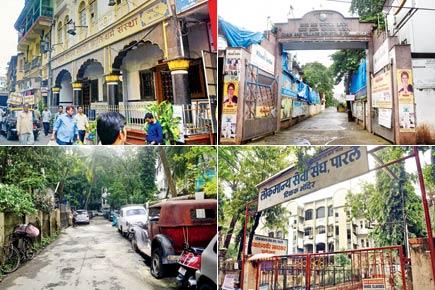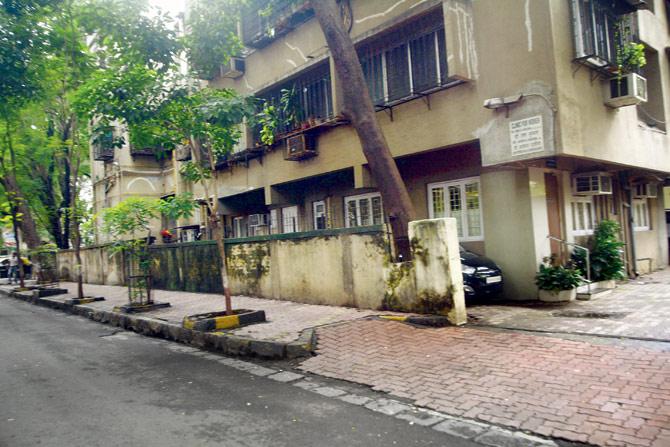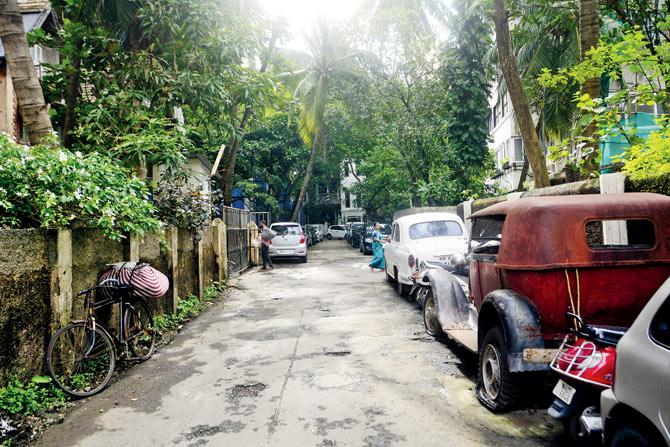As India celebrates another year of freedom, ebb away from the hustle of the city to find these unassuming locations that stand as a testimony to India's freedom struggle


ADVERTISEMENT
Dinanath Natyagruha, Vile Parle
When Gokuldas Tejpal, a wealthy businessman bought a huge piece of land in Vile Parle, he built a bungalow called Mor Bangla in 1904. It hosted some of the best events in its days and saw guests such as Subhas Chandra Bose. "Tejpal was known for his philanthropy and had donated a part of the land for the construction of Vile Parle railway station in 1907," informs Sandeep Dahisarkar, archeologist and art historian. The house has been converted into a performing arts venue.

Khadi Mandir, Alfa Market Street, Vile Parle
In 1934, freedom fighter Maniben Nanavati along with Jayaben Desai, and Shirin and Sunaben Rao, started a Khadi Mandir where spinning was taught to women. "For Maniben, spinning khadi and swaraj was interlinked, and that’s why she started this initiative. Kasturba Gandhi is believed to have inaugurated the place," says Dahisarkar.

Parle Tilak School, Vile Parle
Founded in 1921, the school was built as a tribute to freedom fighter Lokmanya Bal Gangadhar Tilak who was known for his work on education reforms during the freedom struggle. "This 96-year-old institution was founded with the core intention of providing quality education in the suburbs as it was believed that education was pivotal in shaping the minds of the youth," says Dahisarkar.

Lokmanya Seva Sangha, Navpada, Vile Parle
Also called Tilak Mandir, this institution was established in 1923 for commoners to engage with religious, social and national awareness. "This was a major pit-stop for volunteers during the Swadeshi movement, the Salt Satyagraha, Chale Jao movement and Bharat Chodo Andolan amongst others. Mumbai’s first Sahitya Sammelan was held here in 1929. The place now has a gym, library, playground, and halls for cultural programmes and exhibitions," says Sandeep Dahisarkar, archeologist and art historian.

Mumbai Deshastha Maratha Dnyati Dharma Sanstha, Masjid Bunder
Jyotirao Phule, one of the pioneers in the movement for the upliftment of the downtrodden in India, is an important name in the freedom struggle story. "In 1888, he was conferred the title of ‘Mahatma’ in the Mumbai Deshastha Maratha Dnyati Dharma Sanstha by social reformer VK Vandekar. The institution still exists in Raghavji Maharaj Lane and there is a Samadhi of Raghunath Maharaj. Its hall is used for social functions," says Bharat Gothoskar, founder, Khaki Tours.

Chapekar Bandhu Chowk, Cross Maidan
During the 1896 plague epidemic in the city, the British authorities undertook extreme steps like forced house entry and stripping of people including women. "During those times, there was a statue of Queen Victoria at Cross Maidan. The Chapekar Brothers from Pune cut off the nose of the statue and applied tar to it as a mark of protest. Today, this crossing is named after them," informs Bharat Gothoskar, founder, Khaki Tours.

Ajit Villa, Laburnum Road, Gamdevi
This was one of the locations of the ‘Underground Congress Radio’ during the 1942 Quit India Movement. Veteran freedom fighter Usha Mehta started this mobile radio station so that those involved could run away from the backdoor with the equipment, in case of a police raid. "It was interesting how the radio announcement would say ‘This is Congress Radio calling on 42.34 meters from somewhere in India’," says Gothoskar.

Oomer Park, Cumballa Hill
On August 15, 1947, all the Bollywood biggies of the time went out in their car, shouting and singing, to Oomer Park, where the magazine Film India’s publisher and editor Baburao Patel lived. "They sang Vande Mataram outside his house and it was a sight to behold. Later, Patel also hosted one of the biggest independence soirees in town," says film historian Rafique Baghdadi.
 Subscribe today by clicking the link and stay updated with the latest news!" Click here!
Subscribe today by clicking the link and stay updated with the latest news!" Click here!






